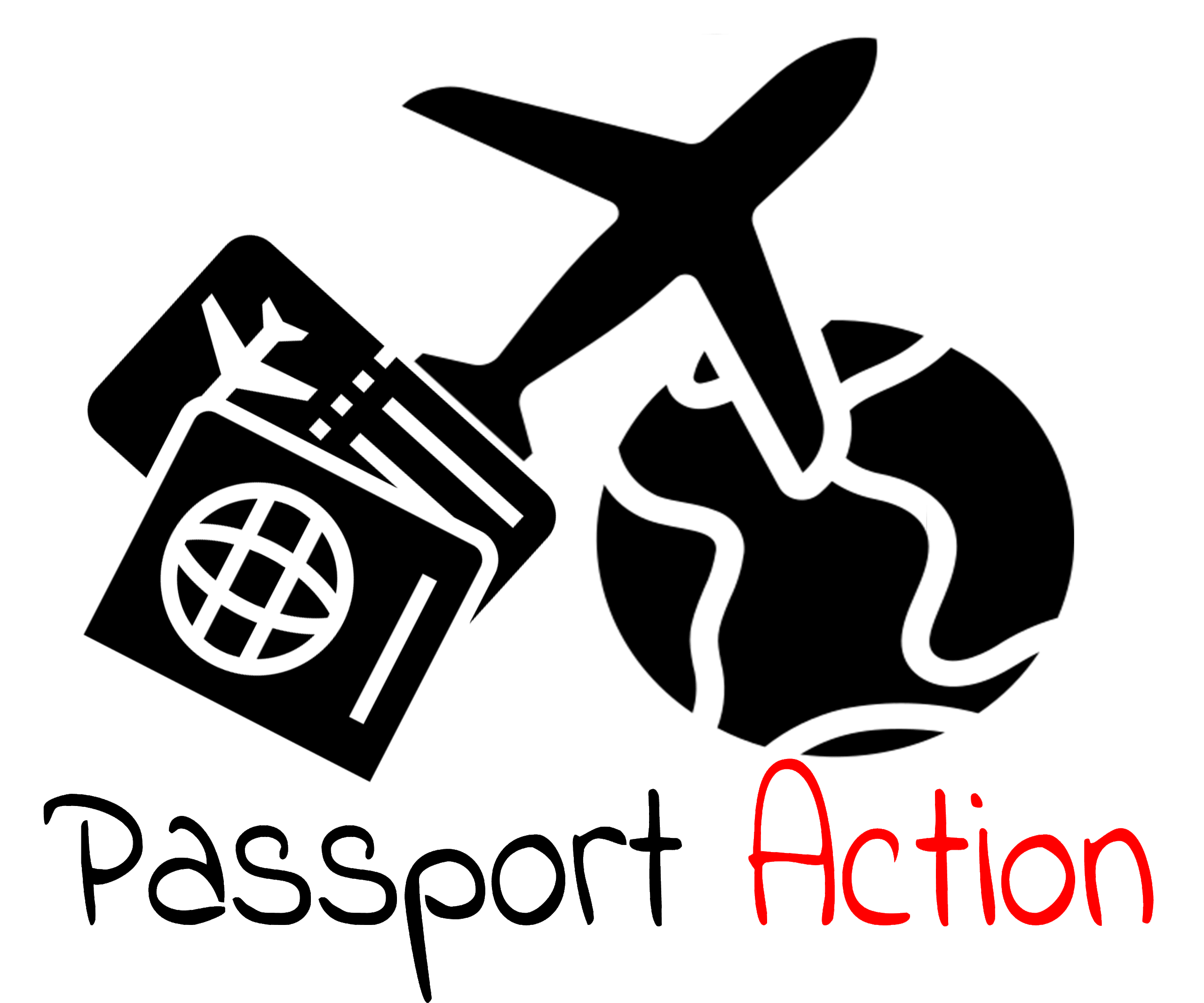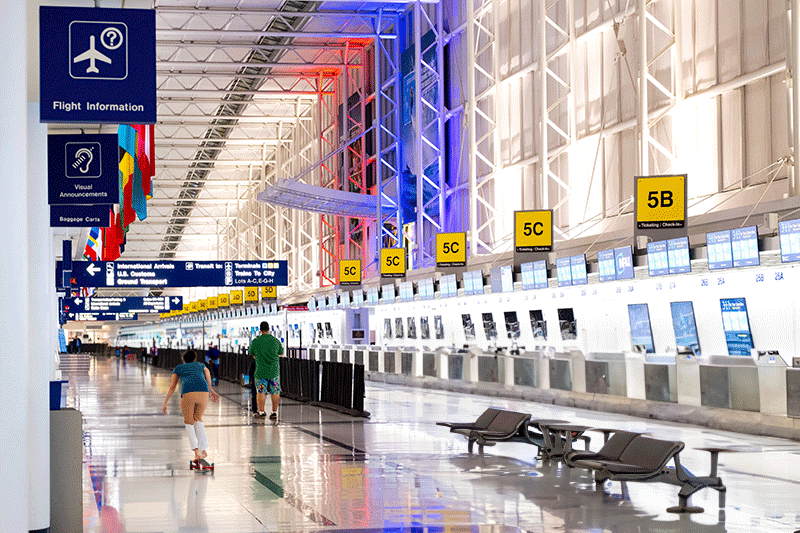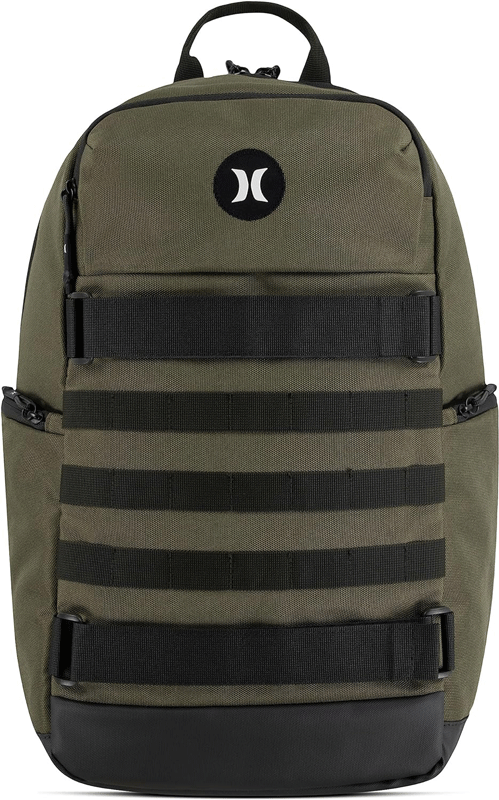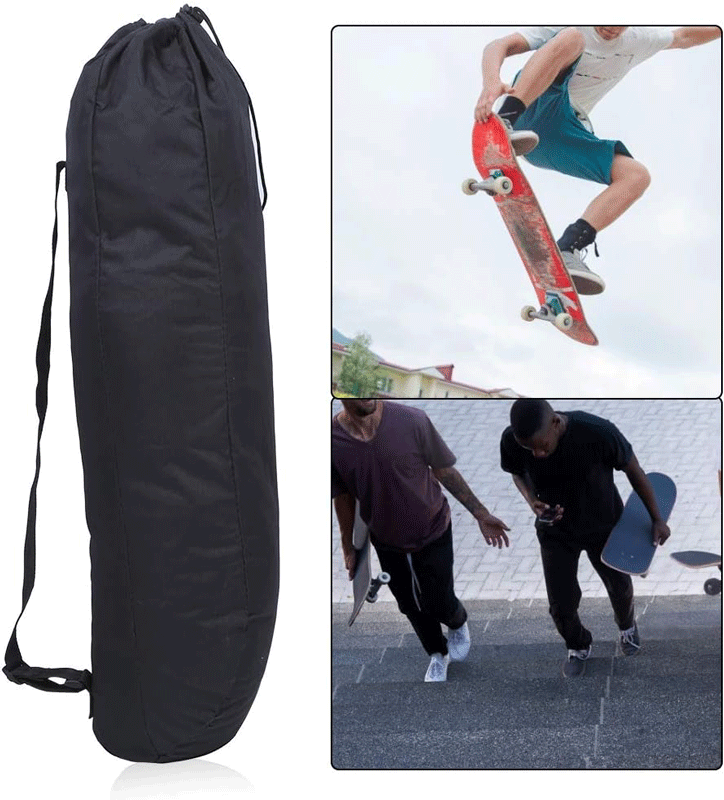Traveling With A Skateboard In An Airport: Tips and Tricks
Traveling with a skateboard? Whether you’re hitting up a skate park in a new city or just want to have your trusty board by your side, flying with a skateboard can seem challenging. But fear not—airports and airlines are quite accustomed to passengers traveling with all sorts of sports equipment, including skateboards. Here’s what you need to know to make your journey as smooth as the ride on your favorite halfpipe.
Check the Airline Policy
Before you even pack your bags, check with your airline about their policies for skateboards. Some airlines allow skateboards as carry-on items as long as they fit in the overhead compartments or underneath the seat in front of you. Others require that you check them in as sports equipment. Knowing the rules ahead of time can save you a lot of hassle (and potentially extra fees) once you get to the airport.
Airlines’ policies on checking skateboards vary, with some allowing them as carry-on luggage while others require them to be checked in. For those airlines that permit skateboards as carry-on, they often need to conform to the standard size and weight restrictions for overhead storage. Passengers are typically advised to consult their specific airline before traveling to understand the relevant policies, as there may be differences in how each carrier handles sports equipment. In some cases, skateboards must be stored in the cargo hold, and passengers may need to provide appropriate protective coverings, such as a bag or trash wrap, especially if the wheels are exposed.
There are certain airlines known for not allowing skateboards as carry-on items, necessitating that they be checked. This can sometimes result in extra fees, depending on the airline’s baggage policies. Additionally, some carriers have specific requirements for checking skateboards, such as detaching the trucks or securing the board in a hard case to prevent damage. While most airlines do accommodate skateboards in some form, whether as checked baggage or carry-on, it is less common to encounter an airline with a complete prohibition. However, exact regulations can change, so passengers should always check the latest information directly from the airline prior to travel.
Packing Your Skateboard For Traveling
If your airline allows skateboards as carry-on:
- Use a skateboard bag: A bag designed specifically for skateboards will protect your board and make it easier to carry. These often come with straps that allow you to wear it like a backpack.
- Remove any sharp items: Tools and spare parts should be checked in or left at home to avoid issues during the security screening.
If you need to check your skateboard:
Buy A Skateboard Bag For Traveling
- Detach the trucks: This lowers the risk of damage and may reduce the size of your board, possibly saving on baggage fees.
- Wrap it up: Use bubble wrap or clothes to pad your skateboard and place it in a sturdy bag or box to prevent any damage during handling.
At the Security Checkpoint
When you approach security, have your skateboard ready for inspection. You might need to take it out of the bag, just like a laptop or other large electronics. Be patient and cooperative with TSA agents—they’re just doing their job to ensure everyone’s safety.
Bringing Your Skateboard In Your Carry-On
Consider the pros and cons of carrying on your skateboard at the airport:
Pros of Taking Your Skateboard as a Carry-On
Bringing your skateboard in your carry-on when traveling by plane offers several advantages for skaters wanting to stay mobile and ready for action. One of the foremost benefits is immediate access upon arrival at your destination. Instead of waiting around for checked luggage, you can swiftly exit the airport and explore your new surroundings on wheels. This convenience is a big plus, particularly for those who use their skateboard as a primary means of transportation or for individuals eager to make the most out of a short trip.
Another advantage is the protection of your equipment. When you bring your skateboard as a carry-on, you have control over how it’s handled throughout the journey. Compared to the unpredictable jostling of checked baggage, where items can get thrown about and come out scratched or worse, having your board with you ensures it stays safe and undamaged. You can also avoid potential losses; since skateboards are unique and sometimes customized, having it lost or misplaced by the airline could be a significant setback.
Moreover, carrying your skateboard with you eliminates the risk and cost of it being lost or delayed with checked luggage. Airlines can misroute bags, leading to a separation from your valued possession, potentially ruining plans you might have had to skate as soon as you arrived. The peace of mind knowing that your skateboard is above you in the overhead compartment or tucked safely under the seat in front cannot be underestimated.
For the environmentally-conscious traveler, skateboarding from the airport can reduce carbon footprint. Instead of hailing a taxi or rideshare for short distances, you can simply step on your board and go. It’s a clean, eco-friendly way to travel that aligns with a sustainable lifestyle. Additionally, skateboarding right from the airport can provide an exhilarating start to any adventure, offering a sense of freedom that comes with being on your board.
Lastly, having your skateboard nearby during travel can serve as a conversation starter and a way to connect with like-minded individuals. Airports are global crossroads where people from all walks of life converge. Your skateboard might just catch the eye of another skater, leading to an exchange of stories about favorite skate spots or even recommendations for places to visit in your destination city. Traveling with your skateboard in tow isn’t just practical; it’s a way to build community and share your passion with others, no matter where you land.
Cons Of Carrying Your Skateboard In Your Carry-On
Bringing a skateboard in your carry-on luggage may seem like a good idea at first glance, but it’s not without its drawbacks. One of the primary concerns is meeting the airline’s carry-on size restrictions. Skateboards often push the limits of allowable carry-on dimensions, and if the board doesn’t fit in the overhead bin or under the seat, it could complicate your boarding process. Airline staff may require you to check the skateboard at the gate which can lead to unexpected fees and the very hassle you tried to avoid by carrying it on.
Another downside is the potential inconvenience to fellow passengers. Airplanes are designed for luggage, not skateboards, and finding space in the overhead compartments can be a struggle, especially on full flights. A bulky skateboard can take up valuable space that could otherwise accommodate another passenger’s carry-on bag. This can create tension and discomfort as you try to fit your board into a shared compartment, and you may feel pressure from both the crew and other passengers to manage your unconventional carry-on.
Carrying a skateboard also adds to your personal load, making the already strenuous process of navigating through a crowded airport even more challenging. Security checks might become longer as officers take extra time to inspect the skateboard, and moving through busy terminals while ensuring your skateboard is safely tucked away can add to travel stress. The convenience of having your skateboard immediately upon arrival might not seem worth it when weighed against the hassle it can cause during transit.
Moreover, the constant vigilance required to keep an eye on your skateboard can detract from the overall travel experience. Unlike a typical carry-on bag that zips up and contains all your items securely, a skateboard is an open item that can easily roll away or be taken if you’re not careful. The mental strain of having to supervise your board constantly, particularly during long layovers or delays, can make your journey less relaxing and enjoyable.
Lastly, there’s the risk of damage—not to the skateboard, but to the plane’s interior or other passengers’ belongings. If not stowed properly, a loose skateboard could shift during flight, possibly causing injury or damaging property. This risk might prompt airline personnel to discourage you from bringing the skateboard aboard, leading to last-minute changes in your travel plans. The responsibility of ensuring the board is secure and safe is an added concern that may overshadow the benefits of having your skateboard close by during a flight.
Checking Your Skateboard At The Airport
Consider the pros and cons of checking your skateboard at the airport:
Pros of Checking Your Skateboard At The Airport
Checking your skateboard at the airport can actually be quite beneficial in a number of ways. For starters, it frees you from the burden of carrying it around as you navigate through the various airport terminals. Airports are typically vast, with long walks to gates, and having your hands free can make a significant difference in your overall comfort and mobility. By checking your skateboard, you can travel lighter with just your essential carry-on items, allowing for a more relaxed journey to your gate.
Another advantage is the reduced stress during security checks. Skateboards can sometimes raise questions during the screening process, potentially leading to delays as TSA agents inspect it more thoroughly. By checking your skateboard, you avoid the potential hassle and scrutiny that comes with taking it through security, ensuring a smoother and potentially faster progression to your departure gate.
Furthermore, by checking your skateboard, you’re often allowed to pack it in a way that provides better protection than if it were carried on. You can use specialized skateboard bags that come with padding and additional compartments for accessories, reducing the risk of damage from impacts or pressure. While there is always some risk of rough handling by airline staff, well-padded packaging can mitigate potential harm to your skateboard during transit.
Checking your skateboard also means that you’ll have it with you at your destination without having to worry about airline carry-on restrictions. This is particularly advantageous for travelers heading to places where public transportation might not be readily available, or where skateboarding is a preferred mode of personal transport. Having your own board waiting for you at baggage claim ensures you can hit the ground rolling and enjoy the local scene right away.
Lastly, many skateboarders travel with additional gear such as helmets, pads, or extra components like wheels and trucks. When you check your skateboard, you can often include this gear in the same bag, keeping all your skate essentials together. This consolidates your belongings and can even save you money on baggage fees compared to paying for additional checked luggage or carrying on multiple items. With everything arriving together, you can start your skateboarding adventure without any delay.
Cons Of Checking Your Skateboard At The Airport
Checking your skateboard at the airport, as opposed to carrying it on, presents several disadvantages. The most obvious is the risk of damage. Luggage compartments in airplanes are not known for gentle handling; suitcases and sports equipment are often tossed around with little care. This rough treatment can lead to significant wear and tear on your skateboard, potentially causing cracks in the deck, bending the trucks, or scuffing custom artwork. The protective layers you apply may not be enough to shield your board from the brute force of transit.
Another disadvantage is the potential for loss or delay. Airline baggage systems, vast and complex as they are, do misplace luggage from time to time. The unique nature of skateboards means they could easily be overlooked or misrouted during the hectic sorting process. If your skateboard is delayed or lost, it can disrupt your plans, especially if you rely on it for transportation or have a skate event lined up. The time spent dealing with customer service to locate your item could be better spent enjoying your trip.
Additionally, checking in your skateboard usually incurs extra fees. Most airlines charge for checked luggage, and these costs can add up quickly, especially if you’re traveling on a budget. Depending on the airline’s policy, skateboards might also be considered oversized or sports equipment, which often attracts an additional premium. These added expenses can make traveling with your skateboard less appealing when considering the overall cost of your trip.
The fourth con is the inconvenience of waiting at baggage claim. After a long flight, the last thing many travelers want to do is stand around the conveyor belt, hoping their belongings appear quickly. There’s always a degree of uncertainty about whether your skateboard made it onto the flight and, subsequently, when it will show up on the carousel. This waiting period can be particularly frustrating if you’re on a tight schedule or if you’ve landed in a destination where you plan to skate straight away.
Lastly, there’s the issue of separation anxiety for those who view their skateboard as an extension of themselves. Skaters often form a strong emotional attachment to their boards, which serve as both a tool and a companion. Checking your skateboard forces a separation that can feel unnatural or unsettling. You lose the ability to grab your board and go for a ride whenever you feel like it, which is especially disheartening in a new city seemingly ripe for exploration on wheels. The lack of immediate accessibility can dampen the excitement and spontaneity that often accompanies skateboarding adventures.
Can You Ride Your Skateboard Inside an Airport?
For travelers who skateboard, it’s an enticing thought: gliding through the wide corridors of an airport, weaving between travelers, and making a quick dash for that distant gate. However, the reality of skateboarding inside an airport is quite different from the fantasy.
Airport Regulations
Airports are high-security environments with strict safety regulations designed to protect all passengers. This means that activities deemed potentially risky are generally prohibited, and this includes riding a skateboard. Airports are bustling with people of all ages carrying luggage, and riding a skateboard could easily cause accidents or injuries—not just to the skater but also to other passengers.
Safety and Courtesy
The priority of airport authorities is safety. Airports often have smooth floors that could be ideal for skateboarding under different circumstances, but the risk of collisions in such crowded and fast-paced environments is high. It’s also a matter of courtesy; many travelers are rushing to catch flights, managing children, or are elderly or disabled. A skateboarder could easily disrupt the flow of traffic and cause unnecessary stress or even injury.
Exceptions and Designated Areas
While you generally cannot ride your skateboard in the common areas of an airport, some airports might have designated spaces outside the terminals where skateboarding is allowed. These are rare, but they offer a compromise for those who wish to use their boards without infringing on the rights and safety of others.
Transit Between Terminals
In some cases, you might spot someone rolling gently on a skateboard between terminals when the airport is less crowded. While this might happen, it’s not officially sanctioned and could result in being stopped by airport security or personnel. It’s always best to err on the side of caution and avoid riding altogether.
When it comes to skateboarding inside an airport, the unwritten rule is simple: don’t do it. The risks far outweigh the benefits, and respect for the safety and comfort of your fellow travelers should take precedence. While it might seem like a fun idea, the potential for harm and the violation of airport policies make it a no-go. Instead, pack your board securely and look forward to the skate parks and streets waiting at your destination.
Final Thoughts About Traveling With A Skateboard In An Airport
Bringing a skateboard to the airport doesn’t have to be stressful. By knowing the airline’s policy, packing properly, and navigating security with ease, you’ll be set to take your four-wheeled friend wherever your travels may lead. Just remember that every airport and airline may have its own set of rules, so always check ahead and be prepared. Happy skating and safe travels!




